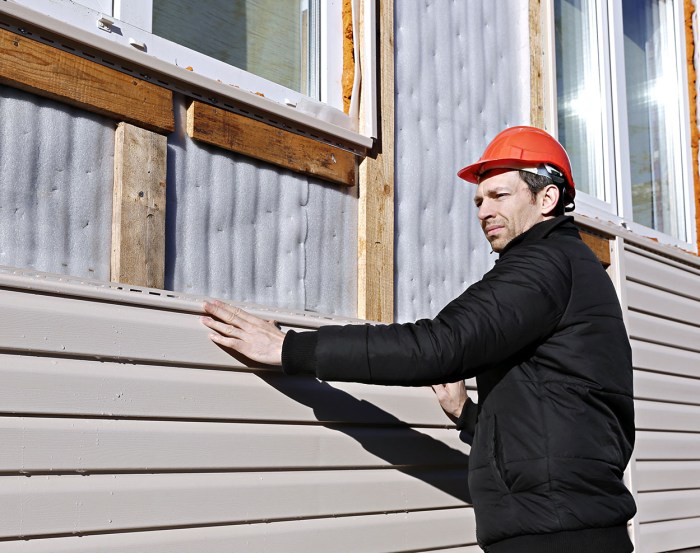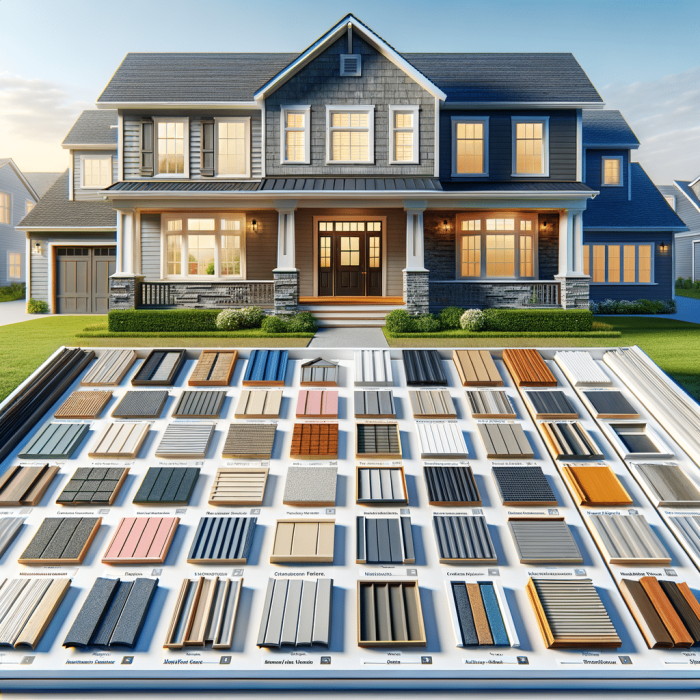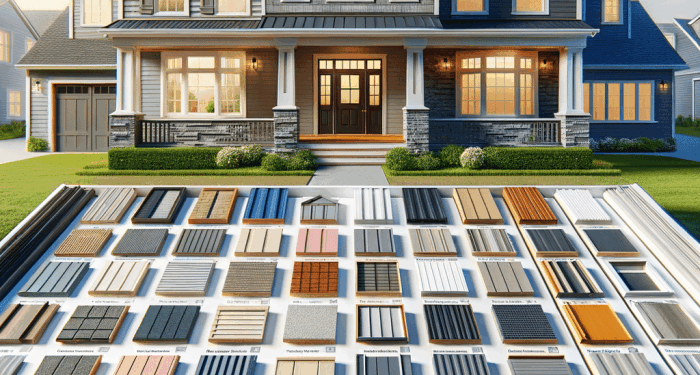As Insulated Siding: The Overlooked Home Upgrade takes center stage, this opening passage beckons readers with engaging insights into the world of home upgrades. From energy-saving benefits to design options, this topic promises a wealth of information that will transform your perspective on siding materials.
What is Insulated Siding?
Insulated siding is a type of exterior cladding material designed to improve the energy efficiency of a home by providing added insulation. It serves as a protective barrier against the elements while reducing heat loss and improving the overall thermal performance of the house.Unlike traditional siding materials such as vinyl or wood, insulated siding features a layer of foam insulation attached to the back of each panel.
This extra layer helps to regulate the temperature inside the home, keeping it cooler in the summer and warmer in the winter.
Popular Insulated Siding Materials
- Vinyl Insulated Siding: One of the most commonly used materials, vinyl insulated siding offers durability, low maintenance, and a wide range of colors and styles to choose from.
- Fiber Cement Insulated Siding: Known for its strength and resistance to fire, moisture, and insects, fiber cement insulated siding is a popular choice for homeowners looking for a long-lasting solution.
- Engineered Wood Insulated Siding: Combining the natural look of wood with the durability of engineered materials, this type of insulated siding offers a beautiful finish with minimal upkeep required.
Benefits of Insulated Siding

Insulated siding offers a range of benefits that go beyond just improving the appearance of a home. Let's explore some key advantages of this overlooked home upgrade.
Energy-Saving Benefits
Insulated siding acts as a barrier against heat loss during the winter and heat gain during the summer. This helps reduce the workload on heating and cooling systems, leading to lower energy bills. The added insulation provided by insulated siding can significantly improve the overall energy efficiency of a home.
Regulating Indoor Temperature
By providing additional insulation, insulated siding helps regulate indoor temperature fluctuations. This means a more comfortable living environment for homeowners year-round. With better temperature control, residents can enjoy consistent comfort without overworking their HVAC systems.
Improved Curb Appeal
Aside from its energy-saving properties, insulated siding can enhance the curb appeal of a home. With a variety of colors, textures, and styles available, homeowners can choose insulated siding that complements their architectural style and personal taste. This upgrade not only boosts the aesthetics of the home but also increases its overall value in the real estate market.
Installation Process
When it comes to installing insulated siding, there are several key steps involved to ensure a successful outcome. Proper installation is crucial for maximizing the benefits of insulated siding, such as improved energy efficiency and durability. Let's take a closer look at the typical installation process, the tools and materials required, and some tips for ensuring proper insulation and sealing.
Typical Steps in Installing Insulated Siding
- Prepare the exterior wall surface by removing any existing siding and ensuring it is clean and smooth.
- Install a weather-resistant barrier to protect against moisture and water infiltration.
- Measure and cut the insulated siding panels to fit the dimensions of the wall, leaving space for expansion and contraction.
- Secure the siding panels to the wall using appropriate fasteners, following the manufacturer's guidelines.
- Ensure proper overlap and alignment of the siding panels to create a seamless finish.
- Finish the installation by adding trim pieces, corner posts, and other accessories as needed.
Tools and Materials Required for Installation
- Insulated siding panels
- Weathertight barrier
- Fasteners (nails, screws)
- Tape measure and level
- Saw or cutting tool
- Caulk and sealant
- Trim pieces and accessories
Tips for Proper Insulation and Sealing
- Ensure a tight seal around windows, doors, and other openings to prevent air leakage.
- Use caulk and sealant to fill any gaps or cracks in the siding panels.
- Pay attention to proper ventilation to prevent moisture buildup behind the siding.
- Follow the manufacturer's instructions carefully to ensure correct installation and maximum insulation benefits.
- Regular maintenance and inspection can help identify any issues with insulation or sealing early on.
Maintenance and Longevity

Insulated siding not only enhances the energy efficiency of your home, but it also offers benefits in terms of maintenance and longevity. Insulated siding requires minimal maintenance compared to traditional siding materials like wood or vinyl
Maintenance Requirements
- Regular cleaning with a mild detergent and water can help maintain the appearance of insulated siding.
- Inspecting for any signs of damage, such as cracks or gaps, and addressing them promptly can prevent more extensive repairs later on.
- Periodically checking the caulking around windows, doors, and seams can help maintain the insulation properties of the siding.
Contribution to Longevity
Insulated siding acts as a protective barrier for your home, shielding it from harsh weather conditions, moisture, and pests. This added layer of insulation helps to preserve the structural integrity of your home's exterior over time.
Tips for Prolonging Lifespan
- Ensure proper installation by hiring experienced professionals who follow manufacturer guidelines.
- Regularly inspect the siding for any damage and address issues promptly to prevent further deterioration.
- Avoid using abrasive cleaners or harsh chemicals that can damage the surface of the siding.
- Trim back any vegetation or trees that may come into contact with the siding to prevent damage.
Cost Considerations
Insulated siding may have a higher upfront cost compared to traditional siding options, but the long-term cost savings it offers can make it a worthwhile investment for homeowners. The energy efficiency of insulated siding can lead to reduced heating and cooling costs over time, making it a cost-effective choice in the long run.
Comparing Costs
- Insulated siding typically costs more upfront than traditional siding materials such as vinyl or wood.
- However, the energy savings provided by insulated siding can result in lower utility bills over time, offsetting the initial higher cost.
Factors Impacting Cost
- The size of your home: Larger homes will require more materials, resulting in higher overall costs.
- Choice of siding material: Different types of insulated siding come at varying price points, affecting the total cost of installation.
- Labor costs: Hiring professionals for installation can add to the overall cost, but ensures proper and efficient installation.
- Additional features: Factors like trim work, insulation upgrades, and removal of existing siding can impact the total cost of the project.
Design Options
When it comes to insulated siding, homeowners have a variety of design options to choose from to enhance the curb appeal of their homes. Insulated siding is not only functional but also aesthetically pleasing, offering the opportunity to mimic the look of traditional materials like wood or stone while providing added insulation benefits.
Mimicking Other Materials
Insulated siding can be designed to closely resemble the appearance of wood or stone, giving homeowners the option to achieve the desired look without the maintenance requirements or costs associated with these natural materials. This allows for a versatile design choice that can complement various architectural styles.
- Insulated siding with a wood-grain texture can provide a warm and inviting look, perfect for traditional or rustic home designs.
- For a more modern aesthetic, insulated siding with a smooth finish can offer a sleek and contemporary appearance.
- Stone-like textured insulated siding can add a touch of elegance and sophistication to the exterior of a home.
Choosing the Right Color and Texture
Selecting the appropriate color and texture for insulated siding is crucial in enhancing the overall look of a home. When choosing the right design options, it is essential to consider the existing architectural style and color scheme of the home to ensure a cohesive and harmonious appearance.
- Lighter shades of insulated siding can make a home appear larger and more inviting, while darker colors can create a sense of depth and richness.
- Textured insulated siding can add visual interest and dimension to the exterior of a home, creating a dynamic and engaging facade.
- Coordinating the color and texture of insulated siding with other exterior elements such as trim, shutters, and roofing can create a cohesive and balanced look.
Closing Summary
In conclusion, Insulated Siding: The Overlooked Home Upgrade offers not just a practical solution but also a touch of elegance to any home exterior. With its cost-saving advantages and durability, it's a choice that stands the test of time. Dive into the world of insulated siding and elevate your home's aesthetics and efficiency simultaneously.
Essential Questionnaire
What are the maintenance requirements of insulated siding compared to traditional siding?
Insulated siding requires less maintenance than traditional siding due to its durability and resistance to elements. Regular cleaning with a mild detergent and water is usually sufficient to keep it looking great.
How does insulated siding contribute to the longevity of a home's exterior?
Insulated siding acts as a protective barrier against moisture, pests, and harsh weather conditions, which helps extend the lifespan of a home's exterior. It prevents issues like rotting, warping, and deterioration, ensuring the exterior stays in top condition for years to come.
What factors can impact the overall cost of installing insulated siding?
Factors such as the size of the home, the type and quality of materials chosen, additional features like trim and accessories, and the complexity of the installation process can all influence the overall cost of installing insulated siding. It's essential to consider these factors when budgeting for this home upgrade.




